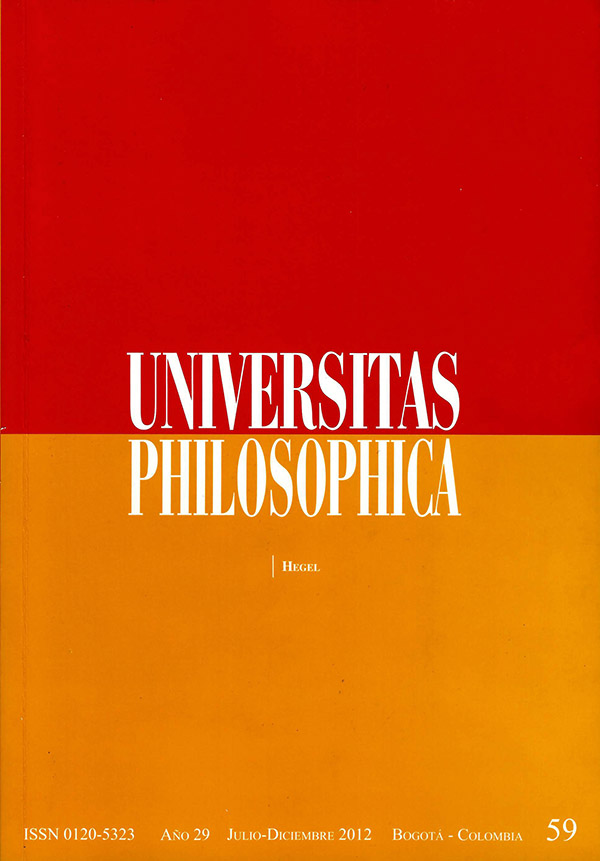Resumen
Cuando en 1784 el arquitecto revolucionario, Boullée, diseña un cenotafio para conmemorar a Newton, hizo visibles en él temas que Hegel en un pasaje de la Fenomenología del Espíritu titulado “La libertad absoluta y el terror”, discutiría: la relación entre la libertad absoluta, el terror y lo sublime. Concebido como una gran máquina para la producción del sentimiento sublime, el cenotafio se sitúa más allá de cualquier posibilidad de representación y de individualización. Asimismo, la Revolución Francesa, para Hegel, será la disolución en el Terror de una libertad que se ha tornado absoluta. Incapaz de aceptar la representación del poder y su individualización se abandona a la muerte como única obra que no traiciona su absoluta libertad. El objetivo del ensayo es mostrar, en paralelo, la anticipación artística y la conceptualización filosófica hegeliana, como indicación de la futura naturaleza del espacio, del vacío y de la representación (política) que aún hoy nos acompaña.
Esta revista científica se encuentra registrada bajo la licencia Creative Commons Reconocimiento 4.0 Internacional. Por lo tanto, esta obra se puede reproducir, distribuir y comunicar públicamente en formato digital, siempre que se reconozca el nombre de los autores y a la Pontificia Universidad Javeriana. Se permite citar, adaptar, transformar, autoarchivar, republicar y crear a partir del material, para cualquier finalidad (incluso comercial), siempre que se reconozca adecuadamente la autoría, se proporcione un enlace a la obra original y se indique si se han realizado cambios. La Pontificia Universidad Javeriana no retiene los derechos sobre las obras publicadas y los contenidos son responsabilidad exclusiva de los autores, quienes conservan sus derechos morales, intelectuales, de privacidad y publicidad.
El aval sobre la intervención de la obra (revisión, corrección de estilo, traducción, diagramación) y su posterior divulgación se otorga mediante una licencia de uso y no a través de una cesión de derechos, lo que representa que la revista y la Pontificia Universidad Javeriana se eximen de cualquier responsabilidad que se pueda derivar de una mala práctica ética por parte de los autores. En consecuencia de la protección brindada por la licencia de uso, la revista no se encuentra en la obligación de publicar retractaciones o modificar la información ya publicada, a no ser que la errata surja del proceso de gestión editorial. La publicación de contenidos en esta revista no representa regalías para los contribuyentes.


